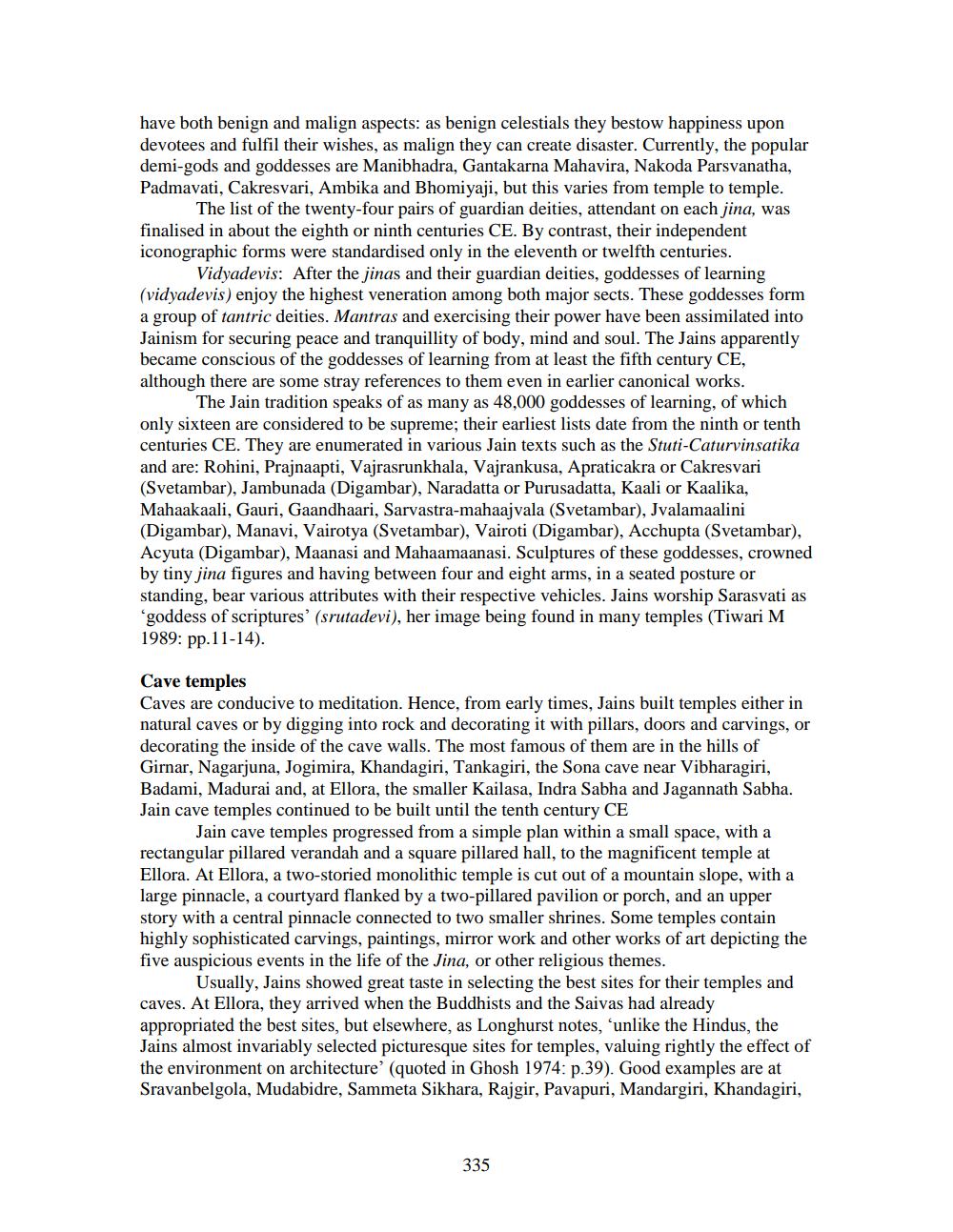________________
have both benign and malign aspects: as benign celestials they bestow happiness upon devotees and fulfil their wishes, as malign they can create disaster. Currently, the popular demi-gods and goddesses are Manibhadra, Gantakarna Mahavira, Nakoda Parsvanatha, Padmavati, Cakresvari, Ambika and Bhomiyaji, but this varies from temple to temple.
The list of the twenty-four pairs of guardian deities, attendant on each jina, was finalised in about the eighth or ninth centuries CE. By contrast, their independent iconographic forms were standardised only in the eleventh or twelfth centuries.
Vidyadevis: After the jinas and their guardian deities, goddesses of learning (vidyadevis) enjoy the highest veneration among both major sects. These goddesses form a group of tantric deities. Mantras and exercising their power have been assimilated into Jainism for securing peace and tranquillity of body, mind and soul. The Jains apparently became conscious of the goddesses of learning from at least the fifth century CE, although there are some stray references to them even in earlier canonical works.
The Jain tradition speaks of as many as 48,000 goddesses of learning, of which only sixteen are considered to be supreme; their earliest lists date from the ninth or tenth centuries CE. They are enumerated in various Jain texts such as the Stuti-Caturvinsatika and are: Rohini, Prajnaapti, Vajrasrunkhala, Vajrankusa, Apraticakra or Cakresvari (Svetambar), Jambunada (Digambar), Naradatta or Purusadatta, Kaali or Kaalika, Mahaakaali, Gauri, Gaandhaari, Sarvastra-mahaajvala (Svetambar), Jvalamaalini (Digambar), Manavi, Vairotya (Svetambar), Vairoti (Digambar), Acchupta (Svetambar), Acyuta (Digambar), Maanasi and Mahaamaanasi. Sculptures of these goddesses, crowned by tiny jina figures and having between four and eight arms, in a seated posture or standing, bear various attributes with their respective vehicles. Jains worship Sarasvati as
goddess of scriptures' (srutadevi), her image being found in many temples (Tiwari M 1989: pp. 11-14).
Cave temples Caves are conducive to meditation. Hence, from early times, Jains built temples either in natural caves or by digging into rock and decorating it with pillars, doors and carvings, or decorating the inside of the cave walls. The most famous of them are in the hills of Girnar, Nagarjuna, Jogimira, Khandagiri, Tankagiri, the Sona cave near Vibharagiri, Badami, Madurai and, at Ellora, the smaller Kailasa, Indra Sabha and Jagannath Sabha. Jain cave temples continued to be built until the tenth century CE
Jain cave temples progressed from a simple plan within a small space, with a rectangular pillared verandah and a square pillared hall, to the magnificent temple at Ellora. At Ellora, a two-storied monolithic temple is cut out of a mountain slope, with a large pinnacle, a courtyard flanked by a two-pillared pavilion or porch, and an upper story with a central pinnacle connected to two smaller shrines. Some temples contain highly sophisticated carvings, paintings, mirror work and other works of art depicting the five auspicious events in the life of the Jina, or other religious themes.
Usually, Jains showed great taste in selecting the best sites for their temples and caves. At Ellora, they arrived when the Buddhists and the Saivas had already appropriated the best sites, but elsewhere, as Longhurst notes, 'unlike the Hindus, the Jains almost invariably selected picturesque sites for temples, valuing rightly the effect of the environment on architecture' (quoted in Ghosh 1974: p.39). Good examples are at Sravanbelgola, Mudabidre, Sammeta Sikhara, Rajgir, Pavapuri, Mandargiri, Khandagiri,
335




